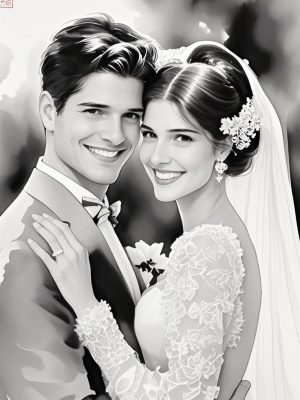The Art and Technique of Ink Portraits: A Comprehensive Guide
Introduction to Ink Portraits
Ink portraits are a timeless form of artistic expression that captures the essence of a subject through the fluidity and precision of ink. Unlike traditional paintings, ink portraits rely on the interplay of light and dark tones to create depth and emotion. This art form has roots in ancient cultures, particularly in East Asia, where ink wash painting was a revered medium. Today, ink portraits continue to captivate audiences with their minimalist yet profound aesthetic.
For those interested in exploring more about artistic techniques, check out our AI Painting Guide for modern twists on traditional methods.
The History and Evolution of Ink Portraits
Ancient Origins
Ink portraits date back to ancient China and Japan, where they were often used to depict scholars, monks, and nobility. The use of ink allowed artists to convey subtle emotions and philosophical ideas through simple strokes. The sumi-e technique, for instance, emphasized spontaneity and harmony with nature.

Modern Adaptations
Today, ink portraits have evolved to include contemporary styles and digital tools. Artists now blend traditional techniques with modern technology, such as AI, to create stunning pieces. For example, our AI Image to Image tool can transform photographs into ink-style portraits with remarkable accuracy.
Techniques for Creating Ink Portraits
Traditional Methods
Creating a traditional ink portrait involves several key steps:

- Preparation: High-quality ink, brushes, and paper are essential.
- Sketching: Light outlines are drawn to guide the final strokes.
- Ink Application: Artists use varying pressure to create light and dark tones.
Digital and AI Techniques
Modern artists and hobbyists can use digital tools to simulate ink portraits. Our Text to Image feature allows users to generate ink-style portraits from textual descriptions, making the art form accessible to everyone.
Common Challenges and Solutions in Ink Portraits
Creating ink portraits can be challenging, especially for beginners. Below is a problem-solution matrix to address common issues:
- Problem: Ink smudging during application. Solution: Use quick-drying ink or digital tools like our Photo Enhancer.
- Problem: Difficulty capturing facial expressions. Solution: Practice with reference photos or use AI-assisted tools.
- Problem: Limited control over shading. Solution: Experiment with brush techniques or digital adjustments.

Conclusion: The Timeless Appeal of Ink Portraits
Ink portraits remain a powerful medium for artistic expression, bridging the gap between tradition and innovation. Whether created with a brush or through digital tools, these portraits capture the soul of their subjects in a way that few other art forms can. For those inspired to try their hand at this art, our Gallery offers plenty of examples to spark creativity.
To learn more about related techniques, explore our Portrait to Art Detail guide for deeper insights.